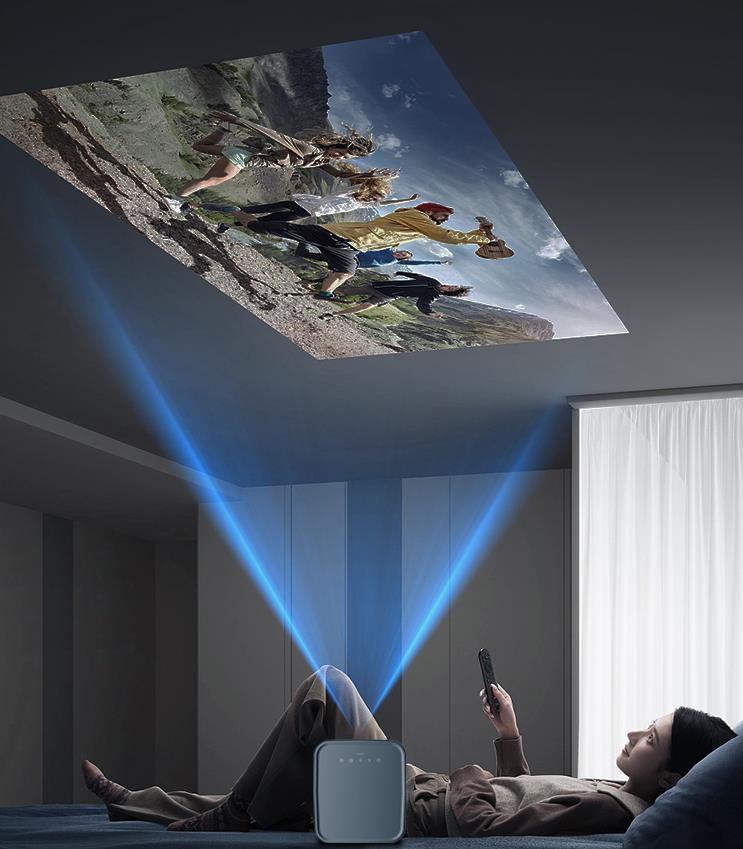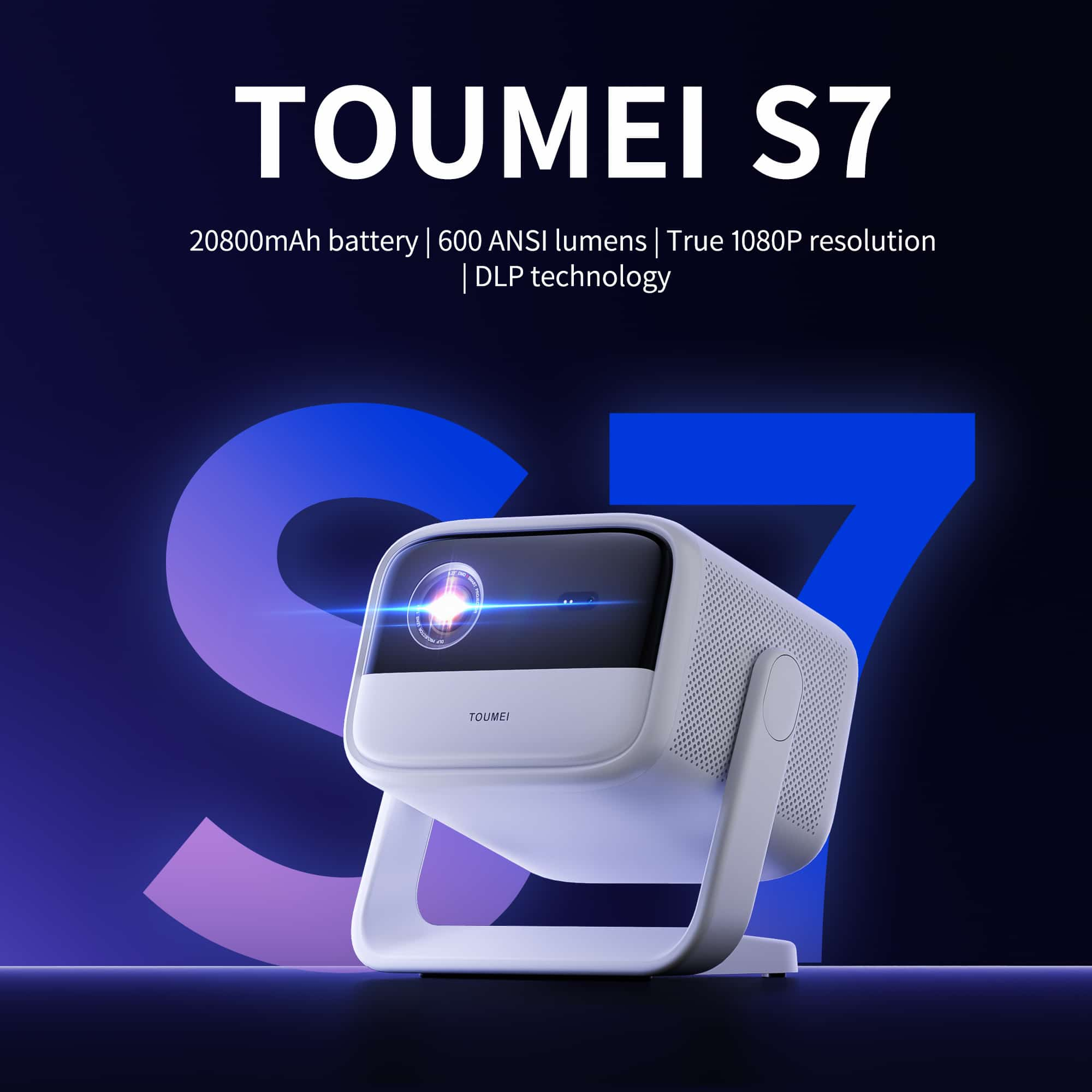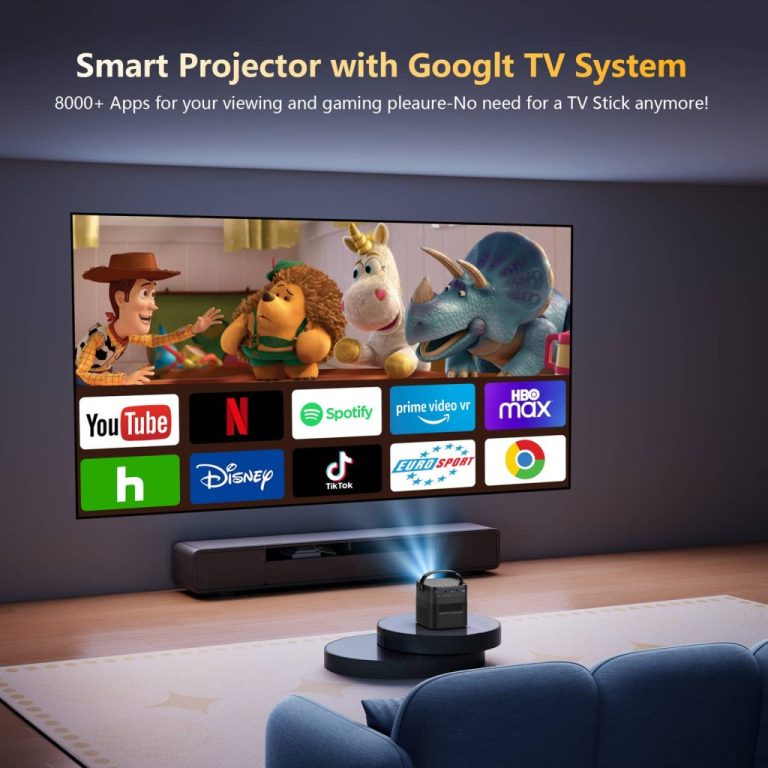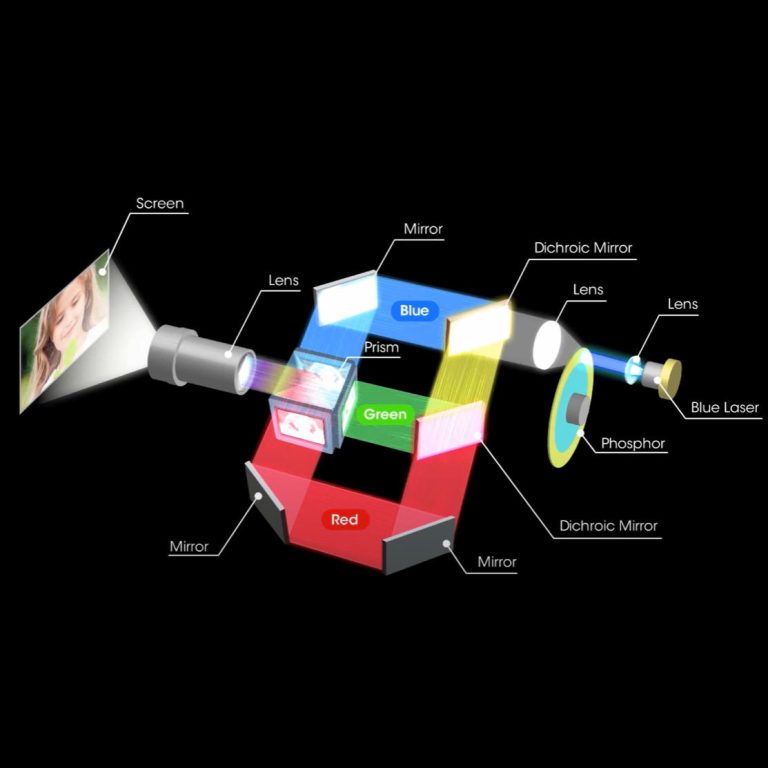As home theater entertainment continues to upgrade, projectors have evolved from being “big screen alternatives” to becoming a standard for quality living. When faced with mainstream 4K and 1080P projector models on the market, consumers are often confused by questions like “Are more pixels always better?” and “What are the differences between 4K and 1080P projectors?” This article will delve into their differences—from technical principles to real-world performance—while offering expert buying advice based on the latest 2025 models.
1. Resolution Differences: Pixel Count Determines Image Quality Ceiling
4K resolution (3840×2160) contains 8.3 million pixels, which is four times more than the 2.07 million pixels of 1080P (1920×1080). This geometric gap is especially noticeable on large screens: when projecting a 120-inch image, each 1080P pixel is four times the area of a 4K pixel. This makes the image graininess visible to the naked eye, turning the explosion smoke detail in Oppenheimer into a blur, whereas 4K clearly captures the motion of each particle. Professional reviews show that on screens over 60 inches, 4K improves detail reproduction by 63% and reduces jagged text edges by 82%.
It’s important to note that some manufacturers use XPR pixel-shift technology to make 1080P chips “simulate 4K,” but the lack of physical pixels causes resolution limitations that can’t be fully compensated by software. Native 4K projectors use true 8.3 million-pixel chips, and whether it’s the glowing plant textures of Pandora in Avatar or the mechanical details in The Wandering Earth 2, they can faithfully reproduce every detail.
2. HDR Performance: Dynamic Range Widens the Visual Gap
4K and HDR are a golden combination. Native 4K panels support 10-bit color depth (1.07 billion colors) and, together with dynamic HDR mapping, can present the light and shadow layering in Dune—preserving both the texture of sand in shadow and the sun’s heat in highlights. In contrast, 1080P models are limited to 8-bit color depth (16.7 million colors) and static HDR decoding, which causes black crush or highlight clipping in high-contrast scenes. For example, the flame effects in the Battle of Blackwater in Game of Thrones often suffer from color banding.
In terms of brightness, most mainstream 4K models use laser or tri-color LED light sources. For example, the Dangbei X5S Max achieves 2800 CVIA lumens, allowing daylight viewing without drawing the curtains. 1080P models typically use single-color LEDs, and anything over 2000 ANSI lumens is considered high-end. In bright environments, these can appear washed out. In terms of contrast, 4K projectors benefit from physical pixel density to achieve higher contrast, with black levels approaching OLED TVs, while 1080P models usually appear more grayish in dark scenes.
3. Gaming Experience: Dual Challenges of Refresh Rate and Input Lag
For console gamers, 4K projectors offer irreplaceable advantages. The PS5 and Xbox Series X support native 4K 120Hz output. Models like the Dangbei X5S Max, with HDMI 2.1, offer input lag as low as 16ms. In fast-paced combat in Black Myth: Wukong, motion blur is reduced by 40% compared to 1080P models. Meanwhile, 1080P projectors support up to 60Hz and usually have input lag over 30ms, which results in screen tearing during quick movements in games like Cyberpunk 2077, affecting control responsiveness.
Another area to watch is motion compensation (MEMC), which is more mature in 4K models. When watching sports events, MEMC can interpolate 24fps movie footage up to 120fps, eliminating judder from fast motion. In contrast, 1080P MEMC often introduces the “soap opera effect,” disrupting the original cinematic film texture.
4. Price and Application Scenarios: The Core Logic of Rational Choice
Today, native 4K projectors start at about ¥5,000 (e.g., Dangbei X5S Max is ¥4,799 after subsidies). Most are priced between ¥8,000 and ¥15,000, suitable for living room big-screen viewing, gaming consoles, and professional home theaters. 1080P models are mostly in the ¥2,000–¥5,000 range, making them ideal for bedroom setups, rental homes, or budget-conscious entry-level users. Note that some 1080P models claim to “support 4K decoding,” but in reality, they only play 4K content while displaying at 1080P resolution, offering minimal clarity improvement.
In the long term, 4K projectors have more upgrade potential. With advances in tri-color and ALPD laser technologies, 2025 models now exceed the BT.2020 color gamut standard (e.g., Dangbei F7 Pro reaches 110% BT.2020), reproducing film-industry-level color. In contrast, 1080P models are limited by chip size, leaving little room for color performance upgrades.
5. 2025 Native 4K Projector Buying Guide
Portable Flagship with High Image Quality: Toumei S7
Equipped with a TI 0.23-inch DMD chip and XPR pixel-shift technology, the Toumei S7 achieves real 1080P full HD resolution. Combined with OSRAM’s latest RGB+PB four-channel light source, it delivers up to 600 ANSI lumens of brightness and rich color. The third-generation sealed optical engine effectively prevents dust and reduces noise. Even when placed on a desk, it avoids glare, maintaining sharp image quality throughout.
Cinema-Grade Color Expert: Epson CH-TZ2800
This classic model uses 3LCD technology and reaches 2800 ISO lumens (≈1750 CVIA), closer to real viewing brightness. A native contrast ratio of 35,000:1 creates deep black levels, and its 10-bit color depth accurately reproduces the film tones of The Godfather. Epson’s unique 24-frame movie mode preserves the original frame rate intended by directors, avoiding the awkwardness sometimes caused by MEMC. Note: 3LCD projectors require regular filter replacements, but their rainbow-free, full-color performance remains a key advantage.
Conclusion: Choose Based on Your Needs to Upgrade Your Big-Screen Experience
The differences between 4K and 1080P ultimately come down to a trade-off between “ultimate picture quality” and “cost performance.” If you want a stunning 100-inch+ screen, enjoy HDR movie lighting effects, or need immersive gaming with a console, investing in a native 4K projector is well worth it. In 2025, new models have made breakthroughs in brightness, color, and smart features. Brands like Dangbei and Epson are bringing 4K viewing into the era of mass adoption with their mid-range models.





